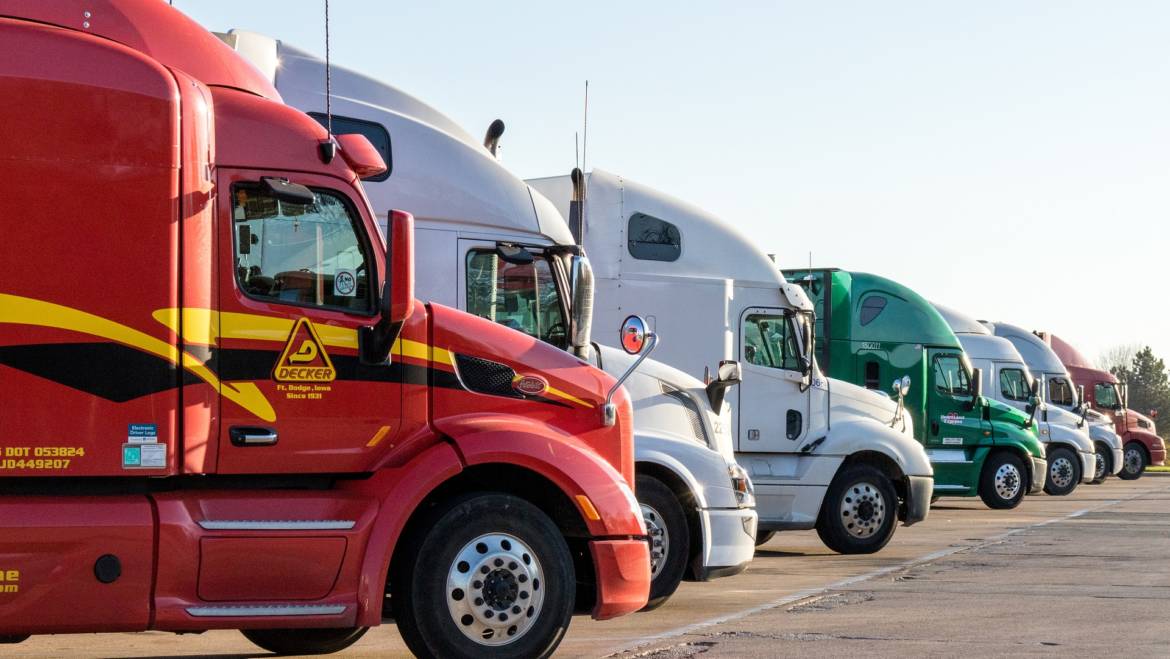FMCSA Issues Personal Conveyance Guidance
Personal Conveyance
Personal conveyance is the movement of a commercial motor vehicle (CMV) for personal use while off-duty. A driver may record time operating a CMV for personal conveyance as off-duty only when the driver is relieved from work and all responsibility for performing work by the motor carrier. The CMV may be used for personal conveyance even if it is laden, since the load is not being transported for the commercial benefit of the motor carrier at that time. Personal conveyance does not reduce a driver’s or motor carrier’s responsibility to operate a CMV safely. Motor carriers can establish personal conveyance limitations either within the scope of, or more restrictive than, the guidance provided here.
FMCSA updates the guidance for § 395.8 Driver’s Record of Duty Status to read as follows:
Question 26: Under what circumstances may a driver operate a commercial motor vehicle (CMV) as a personal conveyance?
Guidance: A driver may record time operating a CMV for personal conveyance (i.e., for personal use or reasons) as off-duty only when the driver is relieved from work and all responsibility for performing work by the motor carrier. The CMV may be used for personal conveyance even if it is laden, since the load is not being transported for the commercial benefit of the carrier at that time. Personal conveyance does not reduce a driver’s or motor carrier’s responsibility to operate a CMV safely. Motor carriers can establish personal conveyance limitations either within the scope of, or more restrictive than, this guidance, such as banning use of a CMV for personal conveyance purposes, imposing a distance limitation on personal conveyance, or prohibiting personal conveyance while the CMV is laden.
Examples of Appropriate Uses of a CMV While Off-duty for Personal Conveyance
The following are examples of appropriate uses of a CMV while off-duty for personal conveyance include, but are not limited to:
- Time spent traveling from a driver’s en route lodging (such as a motel or truck stop) to restaurants and entertainment facilities.
- Commuting between the driver’s terminal and his or her residence, between trailer-drop lots and the driver’s residence, and between work sites and his or her residence. In these scenarios, the commuting distance combined with the release from work and start to work times must allow the driver enough time to obtain the required restorative rest as to ensure the driver is not fatigued.
- Time spent traveling to a nearby, reasonable, safe location to obtain required rest after loading or unloading. The time driving under personal conveyance must allow the driver adequate time to obtain the required rest in accordance with minimum off-duty periods under 49 CFR 395.3(a)(1) (property-carrying vehicles) or 395.5(a) (passenger-carrying vehicles) before returning to on-duty driving, and the resting location must be the first such location reasonably available.
- Moving a CMV at the request of a safety official during the driver’s off-duty time
- Time spent traveling in a motorcoach without passengers to en route lodging (such as motel or truck stop), or to restaurants and entertainment facilities and back to the lodging. In this scenario, the driver of the motorcoach can claim personal conveyance provided the driver is off-duty. Other off-duty drivers may be on board the vehicle, and are not considered passengers.
- Time spent transporting personal property while off-duty.
- Authorized use of a CMV to travel home after working at an offsite location.
Examples of Uses of a CMV that Would Not Qualify as Personal Conveyance
The following are examples of uses of a CMV that would not qualify as personal conveyance include, but are not limited to, the following:
- The movement of a CMV in order to enhance the operational readiness of a motor carrier. For example, bypassing available resting locations in order to get closer to the next loading or unloading point or other scheduled motor carrier destination.
- After delivering a towed unit, and the towing unit no longer meets the definition of a CMV, the driver returns to the point of origin under the direction of the motor carrier to pick up another towed unit.
- Continuation of a CMV trip in interstate commerce in order to fulfill a business purpose, including bobtailing or operating with an empty trailer in order to retrieve another load or repositioning a CMV (tractor or trailer) at the direction of the motor carrier.
- Time spent driving a passenger-carrying CMV while passenger(s) are on board. Off-duty drivers are not considered passengers when traveling to a common destination of their own choice within the scope of this guidance.
- Time spent transporting a CMV to a facility to have vehicle maintenance performed.
- After being placed out of service for exceeding the maximum periods permitted under part 395, time spent driving to a location to obtain required rest, unless so directed by an enforcement officer at the scene.
- Time spent traveling to a motor carrier’s terminal after loading or unloading from a shipper or a receiver.
- Time spent operating a motorcoach when luggage is stowed, the passengers have disembarked and the driver has been directed to deliver the luggage.
For questions regarding personal conveyance email: MCPSD@dot.gov
.

Add Comment